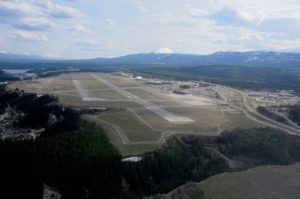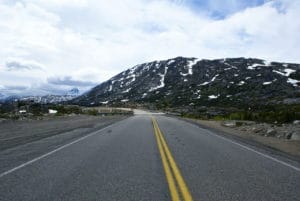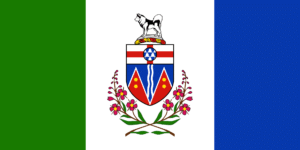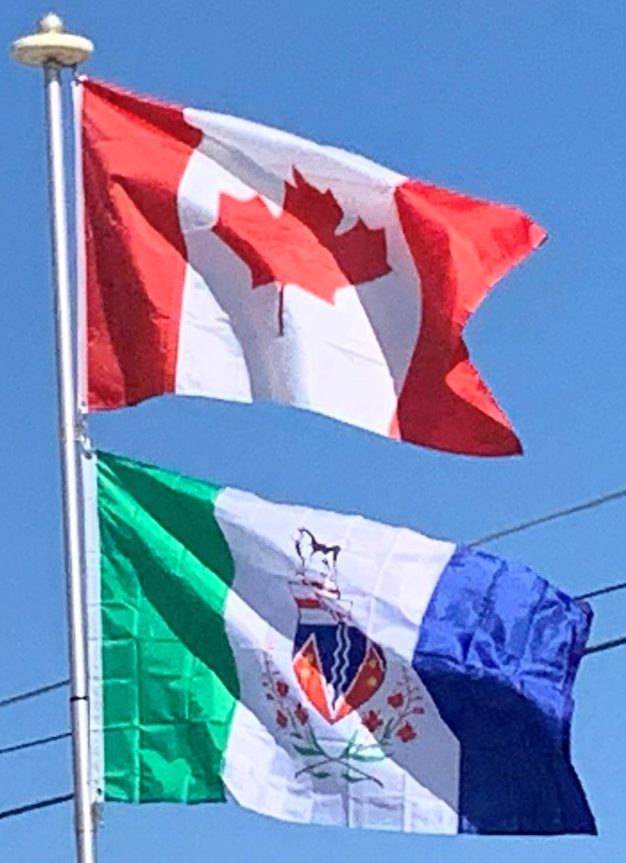Erik Nielsen Whitehorse International Airport serves as the air transport infrastructure hub, with scheduled direct flights to Vancouver, Kelowna, Calgary, Edmonton, Yellowknife, Inuvik, Ottawa, Dawson City, Old Crow and Frankfurt. Whitehorse International Airport is also the headquarters and primary hub for Air North, Yukon’s Airline. Every Yukon community is served by an airport or community aerodrome. The communities of Dawson City and Old Crow have regularly scheduled service through Air North. Air charter businesses exist primarily to serve the tourism and mining exploration industries.

The railway ceased operation in the 1980s with the first closure of the Faro mine. It is now run during the summer months for the tourism season, with operations as far as Carcross.
Today, major land routes include the Alaska Highway, the Klondike Highway (between Skagway and Dawson City), the Haines Highway (between Haines, Alaska, and Haines Junction), and the Dempster Highway (linking Inuvik, Northwest Territories to the Klondike Highway, and the only road access route to the Arctic Ocean, in Canada), all paved except for the Dempster. Other highways with less traffic include the “Robert Campbell Highway” linking Carmacks (on the Klondike Highway) to Watson Lake (Alaska Highway) via Faro and Ross River, and the “Silver Trail” linking the old silver mining communities of Mayo, Elsa and Keno City to the Klondike Highway at the Stewart River bridge. Air travel is the only way to reach the far-north community of Old Crow.

From the Gold Rush until the 1950s, riverboats plied the Yukon River, mostly between Whitehorse and Dawson City, with some making their way further to Alaska and over to the Bering Sea, and other tributaries of the Yukon River such as the Stewart River. Most of the riverboats were owned by the British-Yukon Navigation Company, an arm of the White Pass and Yukon Route, which also operated a narrow gauge railway between Skagway, Alaska, and Whitehorse.
Flag of Yukon:
The flag of Yukon, is a green, white, and blue tricolor with the coat of arms of Yukon at the center above a wreath of fireweed, the territorial flower. An official flag for Yukon was created during the 1960s, a decade in which the national flag of Canada was chosen as well as several other provincial flags were created.
The flag of Yukon was officially adopted on March 1, 1968.

The flag was chosen from a territory-wide competition as part of Canada’s Centennial celebrations of 1967. The competition was sponsored by the Whitehorse branch of the Royal Canadian Legion. A C$100 prize was offered to the winning design. There were a total of 137 submissions with the winning design coming from Yukon College graduate Lynn Lambert. Lambert submitted 10 designs of which one made the final three designs as selected by a committee, with his eventually being named the winner. A prototype design was sent to Ottawa for suitable heraldic description. An expert in Ottawa sent back an amended version of the submitted flag design. The committee in Whitehorse however kept with the original design. The flag was adopted by the ‘Flag Act’ on December 1, 1967.
